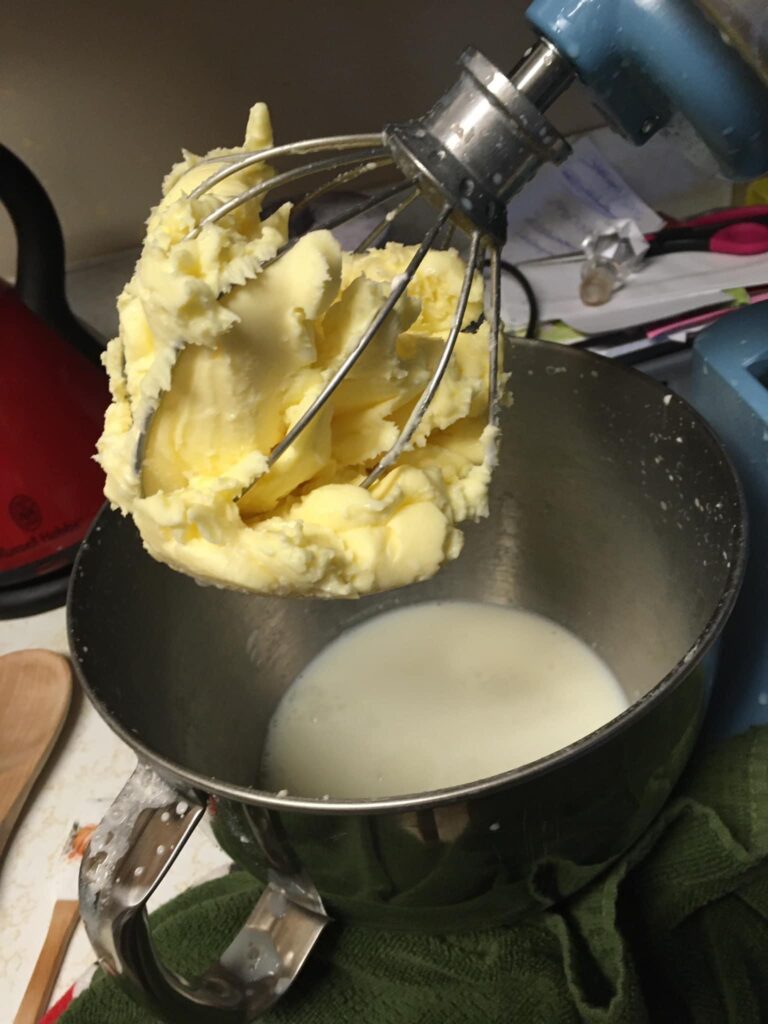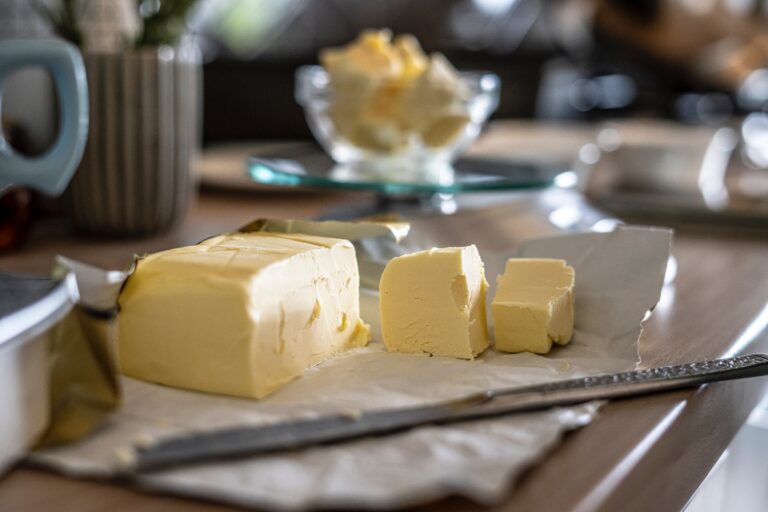The Creamy Debate: Butter vs Margarine
What could be homier than the idea of spreading a creamy dab of butter or margarine onto a hot piece of toast? The butter vs margarine debate might feel as old as time, often setting nannies, chefs, dietitians, and environmentalists all in a tizzy! That’s why today, we’re diving in to unravel this creamy conundrum from the underrated angles of taste, cost, nutritional content, environmental impact, and more. Ok, I”‘m going to say it…if a fly prefers to land on doo doo rather than you (margarine) I know what I prefer.
Understanding the Basics
Hailing back to our grandparent’s days, butter’s a dairy product made purely from cream or milk, usually churned, till it transforms into that golden, luscious spread we adore. On the other hand, margarine was kind of the industrially produced love child derived from vegetable oils. Think about it like the Cinderella of fat spreads, if you will, born out of necessity but not so naturally occurring.
The Purpose of the Debate: Health Perspectives
Honestly, health is the knotted core of this debate. One second a report comes out shouting, “Butter’s fat content is the devil,” only for the next report to lambaste margarine’s trans fats. It’s like a suspenseful movie, where studied facts and personal beliefs make this debate more complex than a haggis recipe.
The Factors Involved: Taste, Cost, and Nutritional Content
Taste, cost, and nutritional content, the holy trinity of the butter-margarine debate, are like the three musketeers of key factors here. We’ll be focusing on them throughout this piece.
The Tale of Butter: Its Origin and How it’s Made
You see, The Tale of butter is like a romantic epic movie with humble beginnings. Originating about 10,000 years ago, butter was originally a method the ancient folks used to keep milk from spoiling. Fascinating, huh? It’s like a dairy superhero! The process is rather simple – take fresh cream or milk, churn it, and in the end, you get butter, with buttermilk as a bonus by-product.
From Invention to Market Leader: The Story of Margarine
Margarine has a more Industrial Revolution vibe to it. It was invited as a cheaper butter substitute by a French chemist, Hippolyte Mège-Mouriès, in 1869 to tackle a national butter shortage. The wonder spread has come a long way since then, switching lards for vegetable oils and occasionally going undercover in neon bright colors.

How We’ve Evolved: Changes in Production Techniques Over the Decades
Time travel with me, dear reader, to witness fascinating changes in production techniques. Butter has kept its course relatively stable. OK, the machines today may look more like Daft Punk, but the methodology remains the same. Margarine, on the other hand, has been a chameleon, transforming from a blend of beef fat and skimmed milk into our modern concoction of water, vegetable oils, and sometimes milk.
Fats and Calories: Comparing Butter vs Margarine
Picture this: two sumo wrestlers, one named Butter, the other Margarine. They’re almost identical in total fat and calorie content. Butter may be 100% fat, sporting a few more saturated fats but hey, margarine isn’t exactly a diet food carrying around 80% fat (including the infamous trans fat).
The Role of Trans Fat: The Crucial Player
OK, think of trans fats as the plot twist in this debate. Initially, margarine was high in these bad boys, sparking health concerns. However, most brands today have reduced or eliminated trans fats, though they haven’t completely disappeared from all recipes. Trans fats are like that annoying cousin that sometimes shows up uninvited to family reunions.
Health Observations: Connections to Heart Diseases, Diabetes, and Other Conditions
Let’s get serious for a hot minute. There’s no clear-cut evidence to say butter or margarine is the outright villain for heart diseases, diabetes, etc. But one thing’s clear, overconsumption of anything isn’t healthy. Moderation, folks, is your secret weapon here. And that could be said for everything, moderation is key. Because sadly there is a thing such as you can have too much chocolate cake.
The Oldest Debate: Taste Comparison of Butter and Margarine
Ah, the fiercest battlefield: taste. Butter, with its rich, creamy, and distinct flavor, is definitely the bell of the ball. Margarine, however, has a neutral taste, making it a versatile player. It’s like comparing a robust dark beer (butter) with a light lager (margarine) – where do your loyalties lie? Mine lies with nature, there’s nothing better than butter on homemade bread, no comparison for me. I make homemade butter, it’s a fun project. My favorite YouTube chef is Chef Jean Pierre. He LOVES butter! The video below shows you how to make it. He gives you one crucial tip in the video on how to not make a big mess. LOL, I wish I had seen this before my first attempt. I love his channel, you can subscribe here…
Cooking and Baking Adaptability: Which is More Versatile?
The versatility crown might be whisked away by Margarine. Now don’t get me wrong, butter is fabulous for baking. I personally much prefer it. But due to its higher smoke point and neutral flavor, margarine holds its own, especially in certain cooking techniques where you don’t want that strong buttery flavor to take over.
The Consumer Perception: What Studies and Surveys Suggest
The survey says… it’s a split decision! Some consumers swear by butter for its natural composition and taste, while others lean towards margarine for its health perception and versatility. I think butter wins on all counts, being as it’s completely natural and always has been.
Margarine's Footprint: Oil Extraction and Processing
Margarine isn’t exactly a green godmother. Considerations include the destruction of tropical rainforests for palm oil, expansive energy to process vegetable oils, and the problems with monoculture farming. In a nutshell, neither butter nor margarine are completely innocent when it comes to environmental impact.
Alterations in Taste: The Switch to Healthier Alternatives
There’s a new trend on the block: look out for low-fat, plant-based, or fortified spreads that seek to combine taste with health benefits and environmental implications. Can you imagine spreading avocado “butter” on your toast? Nothing against avocados, but I’ll stick with my butter.
Market Shares: Who’s Dominating the Butter and Margarine Market?
Globally speaking, the battlefield is split. In some countries, like the US, butter’s the reigning king, while in others, like the UK, margarine is spreading its kingdom wider. I can’t help but imagine it like a Game of Thrones-style epic!
The Transformation: Are Plant-based Spreads the Future?
There’s a lot of buzz with plant-based spreads. With their earth-friendly vibe, nutritional content, and sometimes lower calorie count, could these be the unsung heroes rising on the horizon of our morning toasts and pancake stacks? Again, not for me…but it’s a personal choice.
Individualism in Choice: Respect for Personal Preferences
At the end of the day, it all boils down to individual preferences. Whether you’re into butter’s creamy goodness, margarine’s neutral versatility, or the novelty of plant-based spreads, you do you. It’s just like choosing between wearing sneakers, heels, or going completely barefoot – it truly depends on your style and mood.

Future Research Directions: What Else Needs to be Explored
The debate remains open-ended in many ways. We need to dig deeper into sustainable production methods, health impacts, and evolving consumer preferences. This playground is ripe for exploration and holds many keys to the mysteries of our kitchen spreads.
In summation, dear readers, while both butter and margarine have their unique attributes of taste, nutritional content, and environmental impact, the choice ultimately depends on individual preferences, dietary needs, and environmental consciousness.
But just like when I make a cream sauce I always use full-fat cream, I would have a very hard time giving up my beloved butter! It’s crucial to consume these products in moderation while maintaining a balanced diet. The future seems to be tilting towards plant-based spreads, indicating a possible shift in the butter vs margarine debate.
But guess what else? Further research is needed to solidify these findings and shed more light on our little butter and margarine friends. Until then, keep spreading the love (on your toast) responsibly!
Frequently Asked Questions
Well, well, here’s the plot twist you didn’t see coming! Though margarine is derived from plant oils, some brands do contain ingredients like whey or lactose derived from dairy. So always keep your detective glasses on and read those labels, folks!
It’s like picking your favorite Avengers character – it depends on the character! If you’re lactose intolerant or allergic to dairy, margarine could be your superhero. But if you’re looking to avoid trans fats, turn to butter.
It’s kind of like trying to predict the weather based on a groundhog. Generally, butter might raise LDL (bad) cholesterol marginally more than margarine. However, it slightly uplifts HDL (good) cholesterol as well. So, well, it’s a bit of a draw.
Absolutely! Just make sure you stick to hard margarine rather than the tub variety.
Butter is straightforward — it’s essentially cream, preferable 42% or higher. Margarine, on the other hand, is a blend of water, vegetable oils, and sometimes milk, like a smoothie you don’t want to drink.


